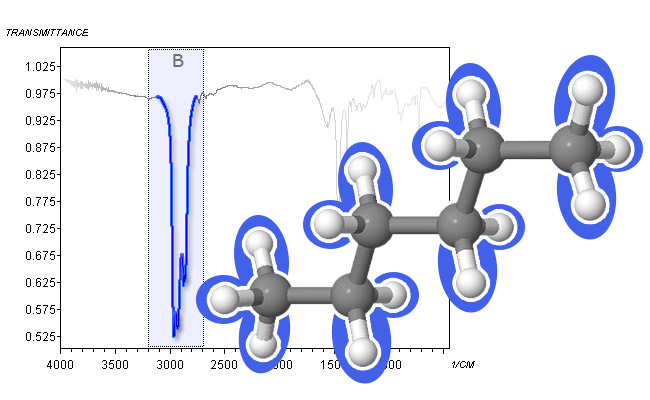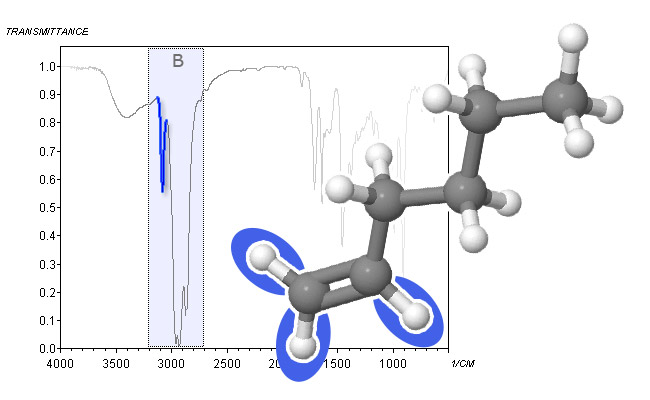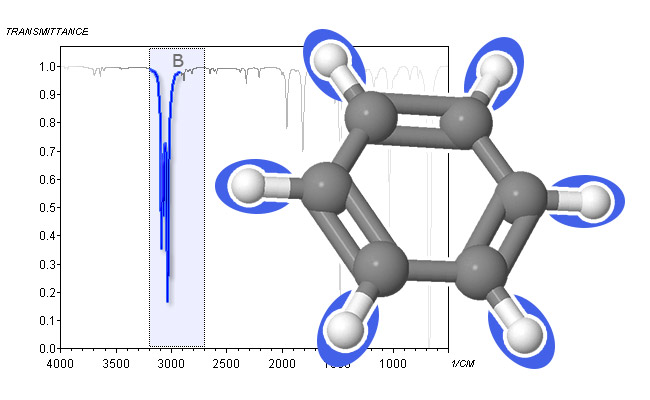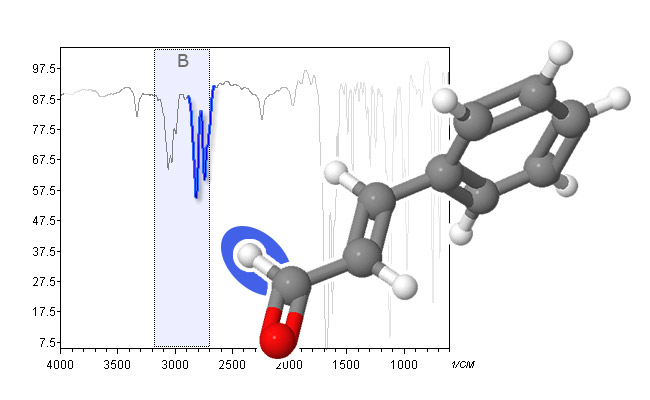Area B (3200 - 2700 cm-1)
Area B
Apart from terminal alkynes, C―H stretches are found in Area B. Within this area, there is a clear demarcation line at 3000 cm-1 between the stretching frequencies of aliphatic (alkane, saturated, sp3 hybridized) groups (R-CH3, R2-CH2 and R3-CH) on the one hand and alkene and aromatic (unsaturated, sp2 hybridized) groups.
- The aliphatic C―H stretching frequencies are found just below 3000 cm-1. The fine structure of the peaks gives information about the presence of methyl (CH3), methylene (CH2) and methine (CH) groups, chain length, branching and the nearby presence of other functional groups. These interpretations will not be detailed here.

spectrum and molecular structure of hexane - Alkene (olefinic) C―H stretching frequencies can be observed just above 3000 cm-1. Similar to aliphatic peaks, they show fine structure that can be used to determine the number and positions of non-hydrogen groups, e.g. E or Z configurations.

spectrum and molecular structure of 1-hexene - Aromatic C―H stretching frequencies are found at the same place as alkene C―H stretching frequencies. Without analysis of their fine structure, it is hard to distinguish the two. Corroborative evidence for the presence of either an alkene or a benzene ring can be found elsewhere in the IR spectrum, for instance in Area E.

spectrum and molecular structure of bezene - The C(O)―H stretching frequency of aldehydes is located around 2800 cm-1. However, because of a phenomenon that is formally known as “a Fermi resonance between the C―H stretching mode and an overtone of the C―H bending mode”, a very characteristic pattern of two peaks is observed for aldehydes between 2900 cm-1 and 2700 cm-1. The peak at the highest wavenumber can easily be obscured by aliphatic C―H stretches.

spectrum and molecular structure of cinnamaldehyde



